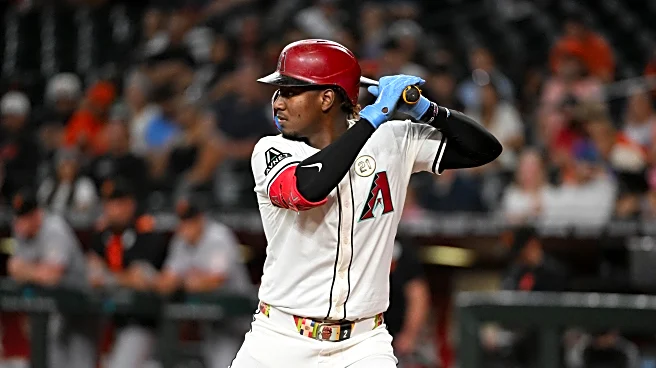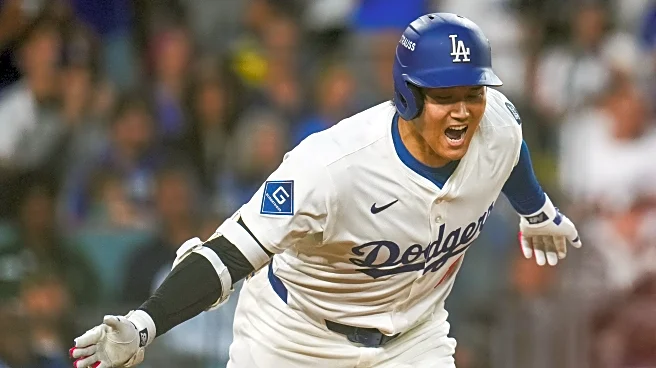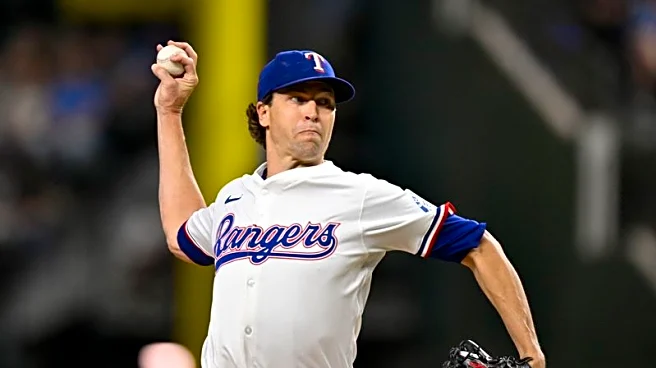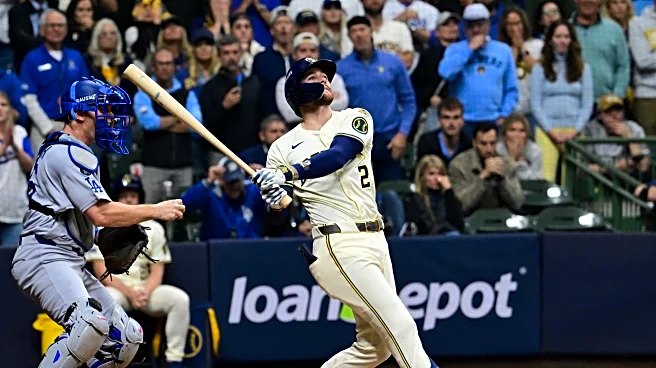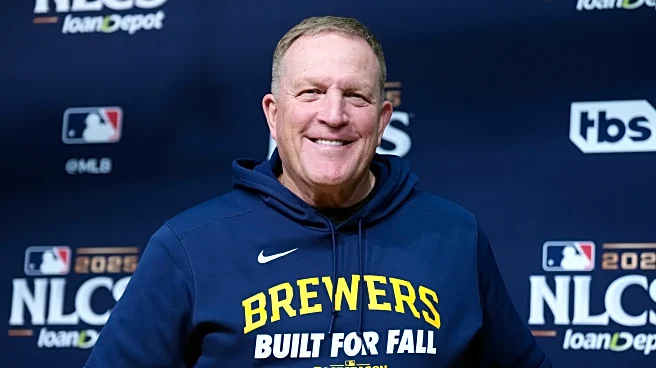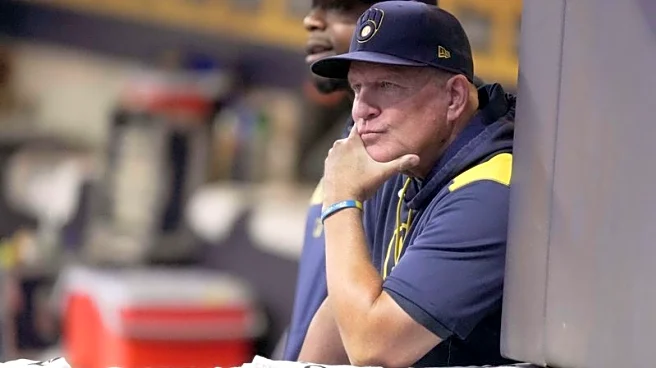I was originally going to choose a slightly more inflammatory headline for this piece: something along the lines of “The BBWAA are idiots.” Wiser heads prevailed in this matter, but please do not think
I am any less than severely miffed by the way Geraldo Perdomo was stiffed of a well-deserved honor. He fully deserved to tie the franchise record, set by Paul Goldschmidt in 2013 and 2015, and finish second in the voting. I might even have settled for third, though I wouldn’t be happy about it. But lower than that is a travesty and a sham and a mockery – a traveshamockery if you will. And I am here to complain about it.
To be clear, I’ve no particular issues with Shohei Ohtani winning the award again. Oh, the whole deferred salary thing is flaky as hell, and the way the whole gambling thing was swept under the carpet with unseemly speed and finality, blaming it entirely on his interpreter, seems dodgy too. I suspect, at some point down the road, we’ll learn more about what happened, and it won’t reflect well on Ohtani. But all that aside, he’s a goddamn unicorn. His hitting alone would put him among the front-runners for the award, and when you add in that he made 14 starts (albeit only throwing 47 innings) with a 2.87 ERA… I grudgingly admit he deserves first place.
But how the heck did Kyle Schwarber and Juan Soto make the top three ahead of Perdomo? I expect ludicrous ballots when it comes to Hall of Fame voting, where the BBWAA allows any member with a pulse to vote, even if they haven’t watched a baseball game in twenty years. But MVP voters are hand-picked by the organization, with two from each NL city chapter. They should be the best and brightest among contemporary writers. Yet they delivered a result which harks back to the days when batting average, RBI and pitcher wins were seen as meaningful [see the 2008 Rookie voting, where Brandon Webb lost out to Dontrelle Willis and Scott Podsednik].
With regard to the criteria, here is what is written on the ballot sent out to voters:
There is no clear-cut definition of what Most Valuable means. It is up to the individual voter to decide who was the Most Valuable Player in each league to his team. The MVP need not come from a division winner or other playoff qualifier. The rules of the voting remain the same as they were written on the first ballot in 1931:
1. Actual value of a player to his team, that is, strength of offense and defense.
2. Number of games played.
3. General character, disposition, loyalty and effort.
4. Former winners are eligible.
5. Members of the committee may vote for more than one member of a team.
#4 and #5 are irrelevant here, and with regard to #2, there’s basically no difference. Perdomo, Schwarber and Soto all played every day, missing just three games between them. Though Schwarber deserves a demerit here, for being a designated hitter – a position which didn’t even exist in the National League four years ago. If he had to play the field, it would certainly have hurt him. Schwarber has never been better than replacement level defensively (by dWAR) in his entire career. In 2023, his last season before becoming primarily a DH, he was -2.8 dWAR. This year, he played precisely 66 innings in the field. So “strength of defense”? Don’t make me laugh.
If you limit the criteria purely to offense, it is possible to reach the conclusion that Schwarber and Soto were superior to Perdomo. The top three qualifying hitters in the league this year were Ohtani (OPS 1.014), Schwarber (.928) and Soto (.921). But we already have an award for the best offensive performance at each position in the league – it’s called the Silver Slugger. And Schwarber did not win one. Perdomo did. So what’s the goddamn point of duplicating the selection on your MVP ballot, and it appears, completely ignoring the entire “defense” part of the specifically listed criteria?
If only there was a metric which could objectively measure a player’s value, and his “strength of offense and defense.” Oh, hang on: there is, and it’s called WAR. In fact, there are two of them, used on Baseball Reference and Fangraphs. And both metrics tell us that Perdomo was clearly superior to all rivals bar Ohtani. Schwarber did not make the top ten by bWAR, coming in all the way down in 13th; he wasn’t even the best player on his own team by this measure, trailing in behind Francisco Lindor, by more than a win. By fWAR, the gap below Gerry may be starker still. Both Soto and Schwarber failed to make the top six, with Lindor again ahead of Soto.
There are arguments over whether to use bWAR or fWAR. So, even though Perdomo’s superiority is clear by both, let’s average out the two measures. There were a total of twelve players who appeared in the top ten by one or other metric. Here are how they stack up in each WAR measure, ranked by the average of the two systems.

Neither Soto nor Schwarber were among the top six “real” most valuable players to their teams. Never mind Perdomo, it seems that Corbin Carroll should also have a beef with the BBWAA voters, being the third-best player in the league. It’s not even close. Perdomo’s WAR was close to fifty percent more than Schwarber. There is, of course, “the Phillies made the playoffs” argument – though that evaporates entirely with regard to Soto and the self-imploding Mets. And Philadelphia won their division by 13 games – no other MLB division had a margin above five. Schwarber could have not shown up at all, and they’d still have prevailed.
Finally, there’s criteria #3: “General character, disposition, loyalty and effort.” Can anyone really claim Perdomo is somehow deficient in these areas? The Athletic – in a rare acknowledgement that the Arizona Diamondbacks exist – had a very good article about Gerry: “Perdomo has not only emerged as one of baseball’s best shortstops but also gained respect and admiration from his Diamondbacks teammates, growing into a leader… [Eugenio Suarez] said one of the best parts of his job is playing next to Perdomo, whom he considers “a great player, but a better person.”“ Or from Zac Gallen: “He’s pretty much become the heartbeat, the captain of the team.”
So, with the deepest respect to the members of the esteemed association: what the actual fuck? One of the nice things the BBWAA have done of late, is publish the actual ballots of the thirty people who decide each award. In this, it’s different from the Hall of Fame – we will probably never know the identity of the sole person who decided Ichiro Suzuki just wasn’t good enough for Cooperstown. Not so for the MVP voting, where everyone choices are made public on the organization’s website, along with their names. So here, in reverse order of WTF?-ness, are the three most egregiously wrong ballots for 2025 NL MVP.
3. Tim Kurkjian, ESPN
Ohtani – Schwarber – Alonso – Soto – Crow-Armstrong – Yelich – Carroll – Perdomo – Sánchez – Skenes
Plot his picks on the map, and it would resemble a map of America from about 1840. The further West you go, the sparser things become. Hey, I guess it’s nice to see he’s willing to look outside playoff teams. But two Mets in the top four? And Alonso third? You have to go very, very far down the lists of objective metrics to find the Polar Bear. He finished no better than twenty-second by fWAR, and was thirty-third by bWAR. By the latter, Alonso was basically the same as Eugenio Suarez – and Geno was traded out of the National League entirely, with two months left in the season. And Christian Yelich sixth? Really? But as we’ll see, that could have been worse…
2. Mark Bowman, MLB.com
Ohtani – Schwarber – Soto – Tatis Jr. – Skenes – Crow-Armstrong – Lindor – Carroll – Alonso – Perdomo
Bowman is officially part of the Atlanta chapter, but looking at this, I think he should relocate to City Field. Not only putting Soto ahead of Perdomo, but also doing so for Mets’ team-mates Francisco Lindor and Pete Alonso, suggests yet another hint of the dreaded East Coast Bias. Except then you have Ringworm Jr. in fourth place. So much for that “general character” clause in the criteria. Then there’s a pitcher just behind Tatis. Admittedly, almost two-thirds of voters picked Paul Skenes somewhere. Seems like double-dipping to me, when they have their own, exclusive award. but there you go.
1. Thomas Harding, MLB.com
Ohtani – Schwarber – Freeman – Yelich – Soto – Machado – Alonso – Suzuki – Marte – De La Cruz
About the only positive thing I have to say about this is, putting Ohtani #1. Thereafter, it’s as if Harding was throwing darts at the All-Star line-up. Not only was he the solitary voter who failed to put Perdomo on his ballot, he was also one of only half a dozen to omit Carroll. I was thinking he might be a “playoff teams only” guy – except he was the only person to vote for Ketel. He somehow had Freddie Freeman third and Yelich fourth – both higher than anyone else – and was the lone gunman to vote for the Cubs’ Seiya Suzuki. Finally, he reckoned the Reds’ Ellie de La Cruz (another independent furrow for Harding) was more worthy of mention than Perdomo.
I politely reached out on Twitter to ask Mr. Harding why he omitted Perdomo, but at time of writing, have received no response. I can only presume that, because he covers the Rockies, he has no recent experience of actual good baseball by which to recognize MVP candidates…
I do want to praise those who did acknowledge Perdomo’s campaign: weirdly, both Chicago chapter members, Meghan Montemurro (Chicago Tribune), and Maddie Lee (Chicago Sun-Times), had him second, as did MLB’s AJ Cassavell. The best overall ballots might belong to David O’Brien (The Athletic) and Maria Guardado (MLB), who both had Perdomo third and Carroll fifth. But as the final results show, those were exceptions. Between the downgrading of Perdomo and Carroll, plus the decision to award American League MVP to Aaron Judge (Lookout Landing aren’t happy!), it seems like #DINGERZ are the only thing that mattered to voters this year.
“I refuse to join any club that would have me as a member.”
— Groucho Marx
